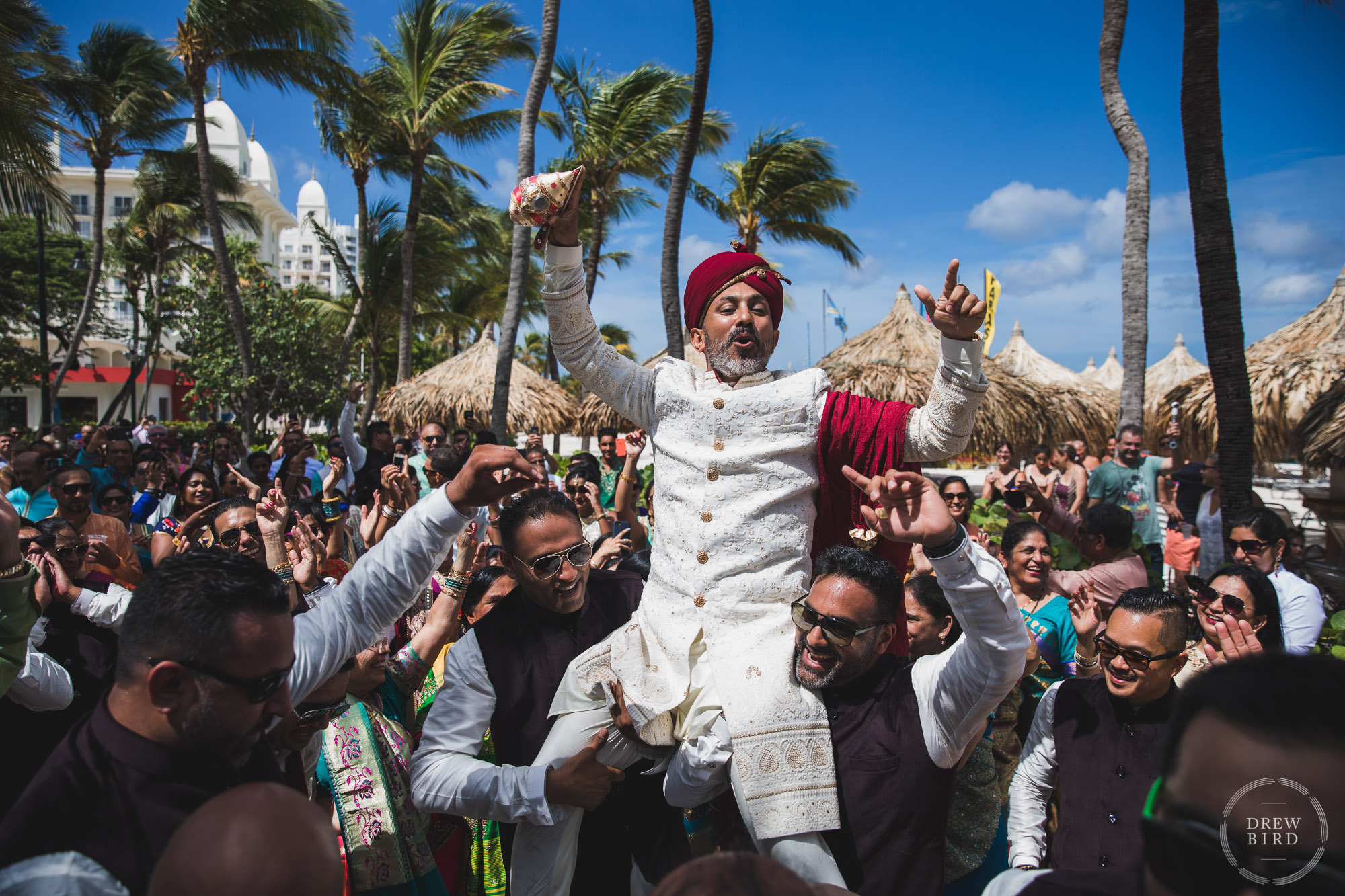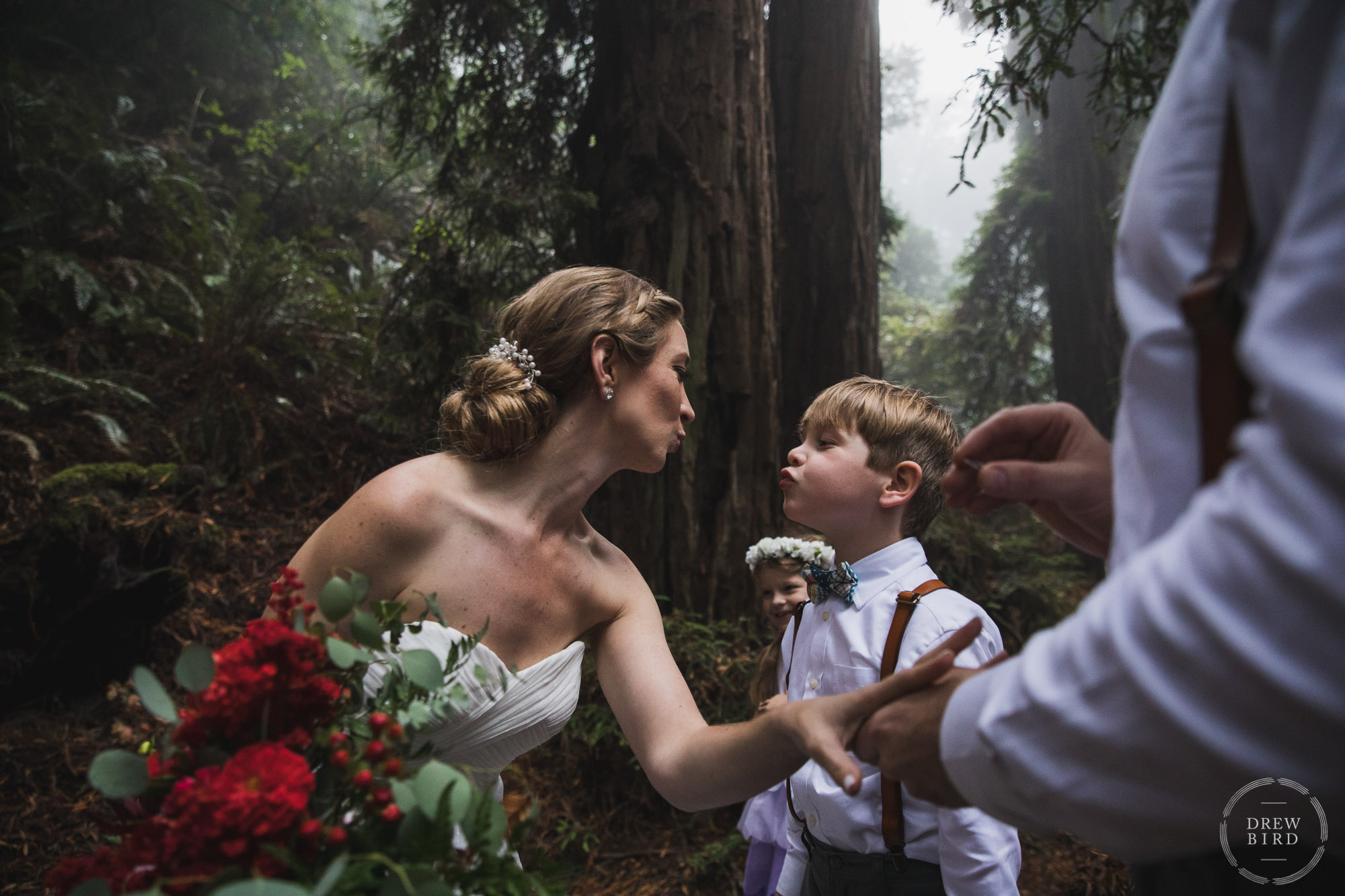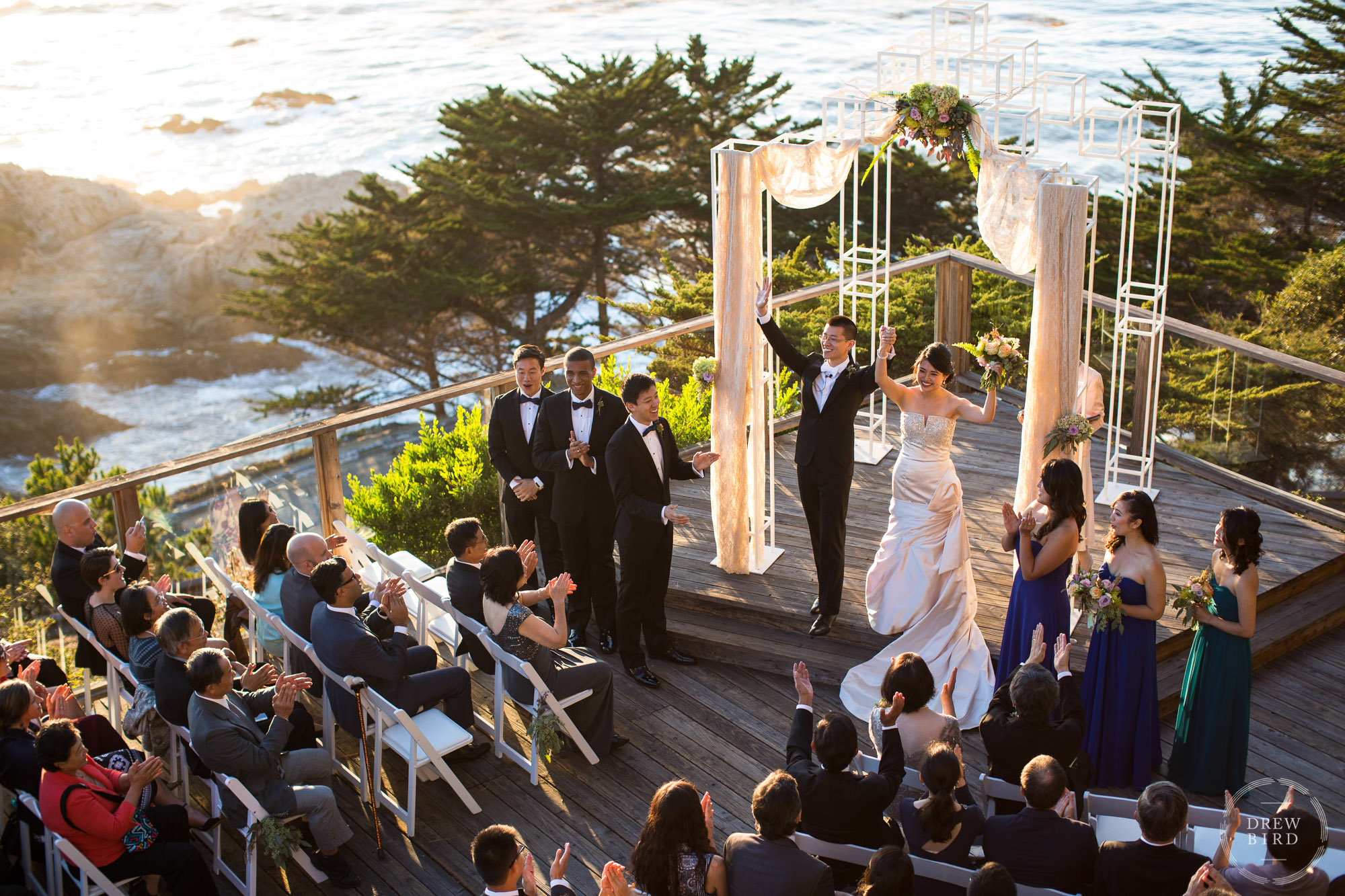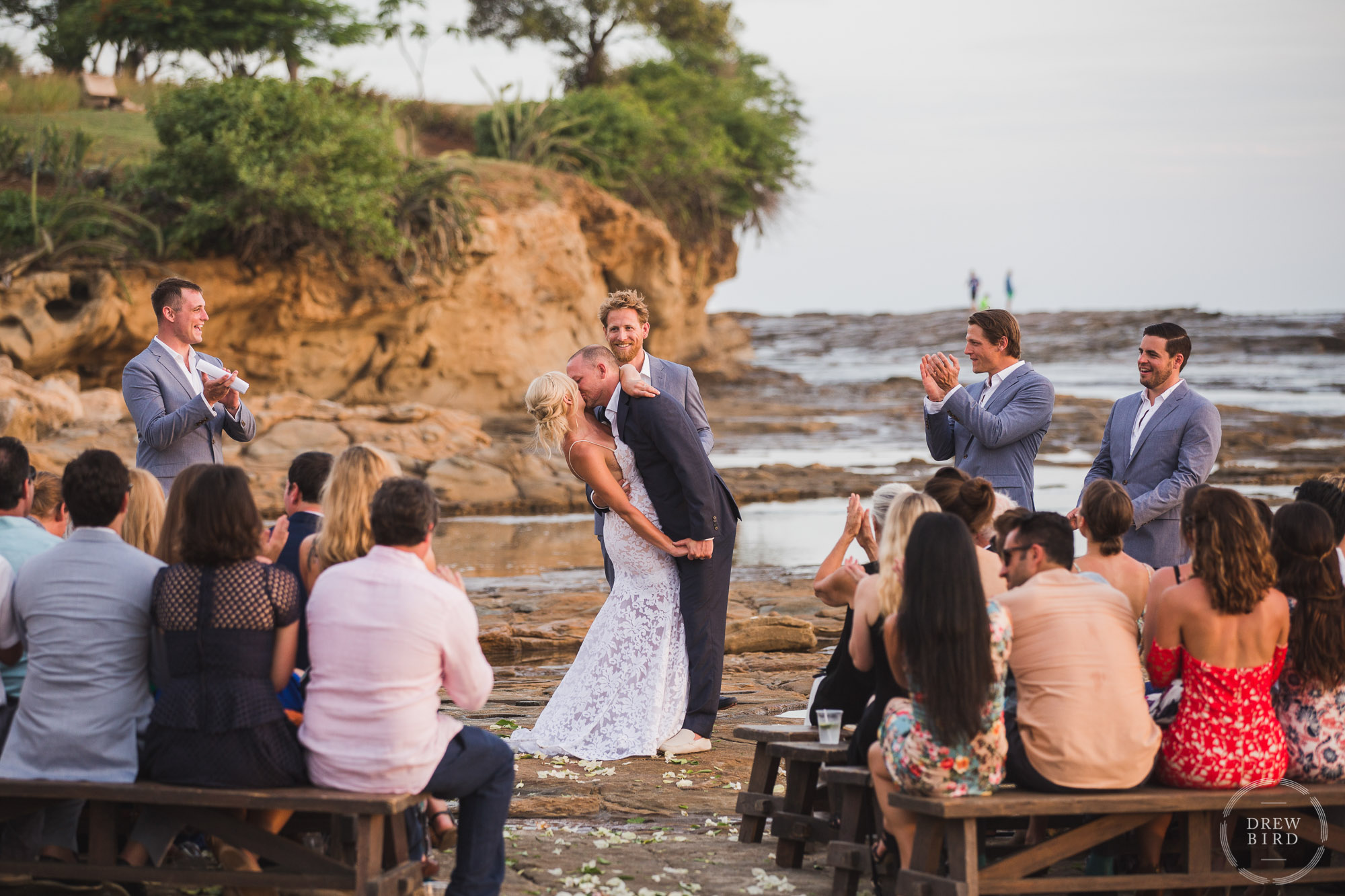Storytelling With Photography
Creating artistic wedding photos that tell a story is challenging and demanding work. There is no script, no do-overs, and most aspects of the scene are simply out of your control — people often do the unexpected and lighting conditions change dramatically in seconds. In addition, weddings are emotionally charged and intimate celebrations that, as a documentary style photographer, require the delicate balance between getting the shot and staying out of the way.
This art form is also incredibly rewarding. There is a magical quality in capturing authentic and genuine moments with a natural, journalistic approach. An expression may only last for a fraction of a second, but if documented in a compelling way, the image and our memory of it can live on for a lifetime. Many people (clients and aspiring photographers alike) have asked me about my process and strategy. This post will provide a few how-to tips for documentary style wedding photography, telling stories with photographs, and creating honest and artistic images. This is a great post for both for photographers and for engaged couples looking to learn more about different styles of wedding photography.
For our purposes, ‘documentary style wedding photography‘ is synonymous with ‘photojournalistic style’ and ‘wedding photojournalism’. They all refer to a style of wedding photography that aims to capture real, candid, unscripted moments as they happen. The photographer is an impartial observer and will make images of events and interactions without interfering. The photographs will tell a story and will be created with integrity, honesty, and artistic creativity.

The Drew Bird Photography Style
Our approach to telling a photo story is a blend of fine art photography, the documentary style, and really creative portrait photography.
Our wedding photography aims to combine the most ideal combination of real unscripted moments AND artistic creative portraits, architectural photography, landscapes, and gorgeous photos of decor and details. For most of the day we will be documentarians photographing events, people, and interactions with a hands-off journalistic style.
We also love to create unique and passionate portraits — where we are involved in picking the scene, controlling for lighting, and helping our clients to be together in that frame in a way that compliments who they are as a couple. Setting and place are also important. Artistic images of architecture, landscapes, and decor are important components of every wedding photo story. When combined, all of these different photographic styles compliment each other and contribute to gravity of the final photo story.
We feel very strongly that the most challenging to create photographs and the highest valued skillset in the wedding photography world is creating compelling journalistic style images of real unscripted moments – this is a skillset that requires years and years of dedication and practice to truly master. It also requires passion and non-stop hustle from the photographer. And these photos are the real moments that will give you goose bumps and twenty years from now will remind you what your wedding day felt like.
By comparison, creating wedding photos of still objects (details and decor) and portraits of people standing still posing for the photo – these are both relatively simple. Important, yes – but it’s easy for a photographer to create a great image when the people are not moving and when they can try a shot three or four times.
Below are a few tips for creating authentic and honest wedding photos that also tell a beautiful story.

Planning and Listening
All great wedding photography stories are born out of empathy. Powerful storytelling always begins with planning and listening. I make a genuine effort to get to know every one of my clients. Understanding their story and establishing a friendship and rapport is the only path to developing a mutual trust. Once established, this trust grants access to more intimate expressions of beauty and connection. This access leads to genuine images. In short: listen -> trust -> empathy -> access -> genuine images.
The entire process begins with planning. Asking the right questions and listening to your clients is vital. Absorbing little bits about their history and family and the choices they have made for their wedding all provide insights that inform my approach to photographing their story. No two weddings are the same. I always seek to find and photograph the qualities that reflect each couple’s individuality.
Having a basic timeline for the wedding day will help to anticipate lighting conditions and enable you to be in the right place at the right time. I often ask my clients to tell their family and guests that they are hiring a journalistic style photographer. These days, when most people see a camera they stop what they’re doing and strike a pose or flash a smile. (You know exactly what I’m talkin’ about.) If wedding guests have been given some time to absorb the idea that it is preferred that they simply ignore the photographer and continue on, I think it definitely helps.
If you have a second photographer, give them instructions and choreograph your movements carefully so that you are complimenting each other, while avoiding redundancy and also remaining unobtrusive.
As with most journalistic style photo storytelling, it’s really important that the subjects of the story are comfortable with you as a person, your presence, and with you as a photographer. This type of connection is all based around relationship building and can only happen with time and shared experience. This is why I always recommend to clients to include multiple days of photography — which might include an engagement session and photos of a welcome party or rehearsal dinner. The deeper the connection between photographer and subjects, the more likely people are to let their guard down and to allow themselves to be vulnerable, which will grant access to photograph moments someone might otherwise be a little self-conscious about.
I’m often asked by guests at a wedding, “so how is it you know the couple?” People see me interacting with the wedding party and they often assume that I’ve known the couple for years. They see me as another friend and guest at the wedding even though, for most clients, we did not know each other at all before they hired me to photograph their wedding story. This perception of me as a long-time friend and member of the ‘inner-circle’ is not by accident. It’s always my intention and it is by design. My easy-going personality helps. But, acceptance all starts with listening and planning and relationship building with your clients.
“The most genuine and remarkable images are always born out of empathy — understanding the story of those you are photographing.”
Know The Place and Anticipate
For the love of all that is sacred, know the place you’ll be photographing. I generally will visit a new venue prior to the wedding day. And, on the day-of I’ll arrive early to scout new locations and to get a sense for what the light is doing that day. Knowing the place and its idiosyncrasies can help me to better anticipate subtle changes in lighting and to be prepared with the best gear (lenses or flash) needed for the right moment.
For couples planning a wedding: I do not think that it is necessary or even important that your photographer has past experience photographing at your venue. It is only important that they familiarize themselves with that new place before your wedding. Most of the venues I shoot at will be a first-time experience. But, I do my homework. I study rooms and exterior spaces and imagine great vantage points, lines of energy within the place, and how pockets of light might affect the images. I do all this prior to photography. That way, when a moment arises that involves a pre-imagined frame and people, I’m ready to create that particular image with a context that is compelling.
Photographing in the documentary style also requires that one hones their observational skills. If you can anticipate what is about to happen – when the energy in a group of people is about to crescendo, for example – then you can peek into the future and imagine what that scene might look like in a few seconds. Doing this will allow you to get into the right place to create an image of some yet-to-happen interaction. This is an exercise that requires practice and experience. The more you try to anticipate your subject’s movements, the more effective you will be.

“A well crafted single photograph is nice. But what really sets a great photographer apart is their ability to make a viewer stop, consider, and feel. This is only accomplished via storytelling.”
Be Everywhere and Nowhere
Creating a unique and captivating wedding photography story also requires hustle. You’re always on and there is always something happening that might contribute to the story in a powerful way. There isn’t much time to rest. Passion is the fuel that keeps me going during an 8 or 12 hour day. While it is important to always be observing people and creating images, it’s also important to know when you’ve got the shot you need and when certain groups of people need more space (i.e. to not be photographed).
Other times, creating an image requires perseverance and patience. In some moments I will see an image in my head before I have created it. I’ll see how certain people might potentially interact in a particular scene with a certain lighting profile. In these instances, I’ll stay in that spot for a while to give the frame a chance to materialize.
After the wedding, you’ll need to have created a wealth of images from the day that tell the story of the celebration. Ideally, you’ll also want your clients and their guests to feel like you were hardly there at all. This duality is difficult to achieve. It helps if you dress the part. I try to match my attire to fit the wedding. If it’s black-tie, so am I. If it’s an Hawaiian beach wedding, that’s what I’m wearing too. As a documentary style photographer you want to blend into the party. Dressing the in the same fashion as guests will act as a type of camouflage. The best feedback I can receive from wedding clients after they see the final photo story is when they say that I seemed to be “everywhere and nowhere” and that they “barely noticed” I was there. A few clients have dubbed me their “own personal photo ninja”. That’s a description I can live with.
"Storytelling with wedding photography is a very fluid and dynamic experience. One has to learn to be aware of the big picture and at the same time be cognizant of the little details that are constantly in motion and changing. In this way the conscious brain plays its part, but there is also an aspect to documenting that is more primal, instinctive, and responsive.”
The Moments In Between
It is true that the big moments at a wedding are important. They are also obvious and predictable. The ceremony. A first dance. Speeches. Photographing these big moments with honesty and creativity is crucial. But, there are expressions of beauty and connection happening constantly throughout the day. I find that my favorite images from any wedding are often from these in between moments: a hand on a shoulder, the facial expression when eyes meet, a little nervous laughter, or two young kids curled up on their fathers lap sleeping in the middle of the reception. Beauty is everywhere, if we only open ourselves up to it. This is why it’s important to remain tuned in to the flow around you and to always have a camera or two on the ready.
A key skill to develop is to learn to trust your intuition. As photographers we can’t literally be everywhere all once. Being in the ‘right place’ at the ‘right time’ to capture an image isn’t just about luck. There are strategies I use to increase the likelihood that I will be in position to document a defining moment. One key tactic is I remain in constant observation of my surroundings — the shifting light, the contours, the angels, and how people are moving and changing together. One has to learn how to be aware of the big picture scene and simultaneously cognizant of the little details that are constantly in motion. The conscious brain plays its part, but there is also an aspect to documenting that is more primal, instinctive, and responsive.
Finding the right balance between thinking and feeling comes with experience and can be helped with thoughtful self-critique of every project you photograph. This is the best way to determine what decisions worked well and which ones did not. Keeping a journal is a great way to organize this data. After all, it’s not beneficial to trust your intuition if your intuition keeps sending you in the wrong direction.
Context and Equipment
There is an incredible moment happening. Quick. What lens do you have on? Do you want a wide-angle so you can be super close to the action? Or is this particular moment better served photographing from a distance? There is no easy answer. Much of this decision making depends on aesthetics. It takes time and trial and error to develop your own aesthetic for creating beautiful images. The lenses you choose to use will influence how a person perceives an image and how they feel in response.
I photograph almost entirely with fixed, prime lenses (i.e. lenses that do not zoom). Most of the time I use a harness system and two camera bodies, one on each shoulder. This way, I normally have one wide angle lens (24 or 35mm) and one longer lens (85 or 135mm) which makes it easier to adjust to circumstance in real time.
For documentary style photography, my favorite lens is a 35mm. Being closer to the action gives the viewer of the image a feeling of deeper intimacy, as if they were part of the action. In addition, context is very important. Making an image where the subject is tightly cropped in the frame can be nice in certain situations. But, for storytelling with images, including more context in the frame is powerful. Context allows a single image to say more than it would otherwise. In crowded scenes I like to use narrow depth of field (aka. selective focus) and include foreground and background elements that tell part of the story.
There are also moments when keeping my distance and being further from the action is important. For example, if there is an important conversation happening between the bride and her mother and my presence near them might be disruptive, I’ll use a longer lens so as not to change the dynamic of the interaction. Learning when to take a step back and when to get close requires time, experience, and trial and error.
Any robust photo story will also have a variety of frames and scenes that are important to communicating the narrative. An individual image alone can have context, certainly. But, a series of images can provide wider context and detail. Imagine an outdoor dance party, for example. As a storyteller, I’ll start with a series of images from a distance that capture the whole scene. Once place is established, I’ll move in a little closer to capture medium frames within that scene. Then, I’ll move in closer still to find closer up vantage points of people dancing, musicians, and other details. Finally, I’ll go even closer and create images of very specific details such as a hand on someone’s shoulder, the guitarists fingers, or a tight frame of someone laughing. Taken together, a series of five images will tell a very complete story of that scene.

Certainly, there is more to it than the suggestions I’ve made in this post. Documentary style wedding photography (aka. wedding photojournalism) and telling stories with still images is a wonderful art that, to really master, requires years of practice combined with a technical mastery of your gear, a solid understanding of the physics of light and human behavior, and a burning passion to create moving images.
For couples planning a wedding: do be careful. These days ‘wedding photojournalism’ and ‘candid wedding photography’ has become something of a buzz word. And, it is often misused. There are many photographers who market themselves as such, but who are not really committed to or experienced with actual documentary style storytelling. A quick view of their portfolio reveals that most of the images are staged and/or portraits. A good way to vet any self-described candid wedding photographer is to see if they have been accepted to a professional guild such as the WPJA.
Happy photo’ing my friends! Let me know if you have any questions or ideas. I’ll leave you with this quote from the great Sam Abell:
“There is more to an amazing photograph than information. We are also seeking to present an image that arouses the curiosity of the viewer or that, best of all, provokes the viewer to think, to ask a question, or simply to gaze in thoughtful wonder. We know that photographs inform people. We also know that photographs move people. The photograph that does both is the one we want to see and make.”
Drew Bird is recognized as one of the top 10 photographers in California and the top 100 International Wedding Photographers in the world by the Wedding Photojournalist Association. He is currently based in San Francisco and creates photo stories for clients world-wide. Get in touch with Drew.


You always seem to capture such fun spirited memories!! Beautiful as always!
Wow!!! I loved the blog, in addition of just writing the tips you also gave me some really cool ideas about what should I ask my photographer to capture on the wedding day, especially the parts about chilling with my bridesmaid.
Great!
Thanks for sharing!
Such a beautiful emotions in your images! Love them so much!!
Thanks for sharing.
Documentary style wedding always challenging, I agree with all of your tips, I found it more helpful to me.
Thanks for sharing !!
This post is so helpful. I want to learn the art of wedding photojournalism. Thanks for sharing your experience and insight.
Daaaaaaaaaannnngggggg! Amazing tips and LOVELY PHOTOS!!! Thanks for the insight into your craft and process.
ummmm, WOW!!! i love your photo style. ; )
Absolutely fantastic tips. Thank you!
So much good information and your images are lovely!!
i love your photo style. Amazing look!
This article is very good. I like. Bravo!
Superb images. I really love the way you edit your pictures. They look so good. The color grading and contrast of the images is great. Thank you for the inspiration!
Absolutely amazing perspective. Your photos feel real and have a certain life to them. In a world where most wedding photography is so cookie cutter cliche, your photos are a breath of fresh air.